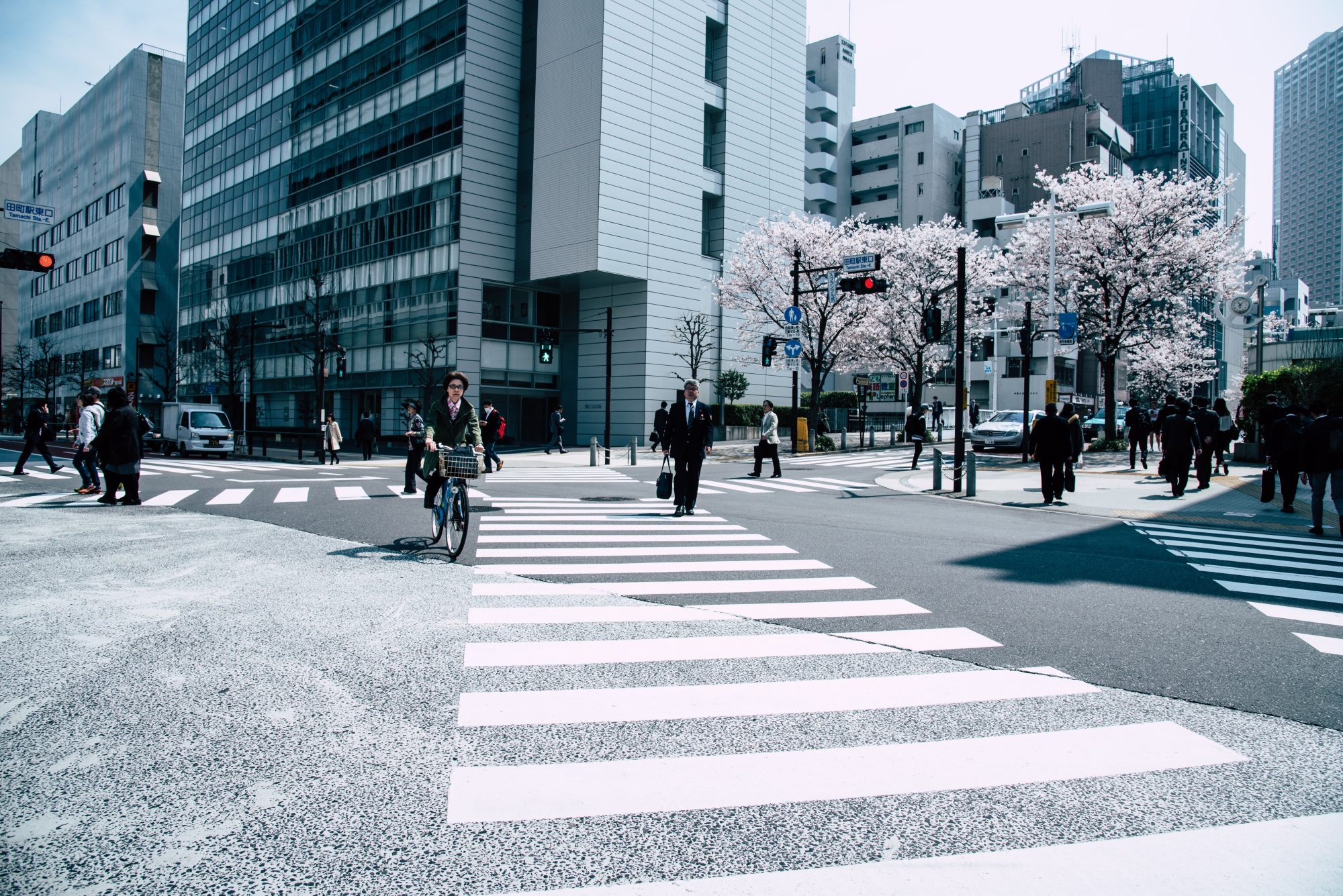
Action Insights
Connecting the Dots: Using Big Data to Understand Mobility Gaps in American Cities
Strategic Leadership and Management
Action Insights
Last Updated
Topic
Collaboration
Location
Europe
Complex social issues cannot be solved by individual organizations. Yet cross-boundary collaboration is by no means a simple or easy process. So what can you do to innovate across organizational silos effectively? This study supported by the Bloomberg Harvard City Leadership Initiative explores the conditions under which multi-agency teams are more likely to succeed in developing creative solutions for difficult-to-solve challenges.
Read the Action Insights below, or download as a PDF for use later.
Instead of rushing to come up with a solution, policymakers should pause and consider the “workspace” in which professionals from different agencies are expected to collaborate. This is not (just) a physical environment, but a designated place in space and time, and institutional context, where the work gets done. Ask yourselves: Does the space foster multi-agency collaboration? Does it involve people with a diverse mix of backgrounds–and does it adequately enable their participation? Does it maximize their focus on the task at hand, while minimizing distractions? Does it engage management in a constructive way?
An effort in the Netherlands illustrates the importance of considering these and other questions when trying to innovate solutions to difficult social challenges. In June 2015, national law enforcement officials challenged a group of five Dutch professionals to find a new way to prevent drug gangs from paying or coercing residents in low-income neighborhoods to grow marijuana in their homes. In addition to being illegal, the practice put a huge strain on the power supply and greatly increased the risk of fire.
The five did not know each other and came from different professional backgrounds and organizations, all with their own perspectives and objectives: the police officer was focused on raiding grow houses, the representative of the mayor’s office on developing a more sustainable approach to combating the problem, the utility company manager on ensuring customer safety, the public prosecutor on disrupting criminal gangs’ exploitation of vulnerable residents, and the tax office representative on tackling money laundering and tax evasion.
Although it had nine months to develop a solution, the group understood the urgency of its assignment. “Time is running out,” the head of the Dutch Prosecution Service informed the team as it gathered together for the first time. “It’s up to you to put a stop to this!” Given their many differences, however, the five faced a difficult path forward. Could they find common ground? And even if they did, would their bosses accept the outcome? After a few rounds of bickering and growing tension, the group grew increasingly skeptical that it would overcome its differences and produce a collaborative solution. Yet, the team still had a chance to succeed–if the conditions of the work environment allowed for it.
Tackling complex social issues, like the crime and poverty associated with the grow houses, is a difficult undertaking that requires multiple parties to come together and pool expertise, resources, and power. While convening the right mix of public, private, non-profit, and community organizations is a necessary condition, it is by no means sufficient. Multi-agency teams often struggle to agree on defining the issue at hand, let alone what a solution might look like.
Given the varied backgrounds and agendas of the participants, the work of an ad-hoc, multi-agency group can all too easily go off the rails. However, even in the most complicated of circumstances, there are still ways to facilitate and foster collaborative innovation. One seemingly obvious but all too often overlooked strategy is the intentional creation of an environment that supports collaborative inquiry by design.
In 2019 we published an article in the journal Policy & Politics examining the design of such environments. Drawing on a multi-year action research study, the article offers insights into how the design of a collaborative workspace can enhance the development of new policy solutions.
Our research centered around the Organized Crime Field Lab (OCFL) in the Netherlands, a multi-agency collaboration involving the Dutch Public Prosecution Service, the National Police, and our team of academics from the Netherlands and the United States. (The term “Field Lab” captures the dual nature of this government/university collaboration which involved public sector innovation projects and our academic study of the collaborations. Similar approaches to facilitating and examining cross-boundary collaborations have also been used and documented in the United States.)
Involving over 160 participants–police officers, public prosecutors, tax inspectors, local and regional government officials, and non-state stakeholders–the OCFL consisted of eighteen different multi-agency collaborations, each focused on developing a new approach to fighting organized crime (i.e., strategies that were more strategic and preventative than the traditional reactive approach of arrest and prosecution). The field lab was more than just a mechanism to facilitate collaboration among the participants, however. It also served as an environment for us, as the research team, to examine the design components that enabled and hindered collaboration.
As is common in action research (a “learning by doing” process), we worked to improve OCFL’s problem-solving capacity while simultaneously studying its progress. At one level, we supported the collaborations’ efforts to design new and potentially transformative solutions by providing them with training and coaching, adjusting our approach across the four years of the project by adding and removing topics from the curriculum, and changing the format of the sessions.
At another level, we studied how the collaborations responded to changes we made to our training and coaching services (i.e., the “design environment”) through both direct observation and a series of surveys and interviews. This research not only informed our efforts to improve the design of the OCFL itself, but enabled us to expand our understanding of challenges to collaboration in a more general sense.
After assessing the effects of changes made across the four iterations of the OCFL, we identified six critical factors regarding the design of a collaborative innovation environment:
Multi-agency collaboration benefits from having a dedicated place (real or virtual) and time set aside for collaborators to try, fail, and learn. In practice, this includes arranging regularly scheduled meetings for collaborators to engage with one another on a routine basis, as well as developing project timelines that feature opportunities for obtaining feedback and experimentation.
Providing collaborators with practice-oriented analytic frameworks and diagnostic tools can help them think more systemically and more strategically about the challenge they are seeking to address and alternative paths forward.
The composition of teams and the process for selecting team members matters. Diversity in all dimensions, when truly leveraged and well managed, leads to richer conversation, smarter solutions, and better results. Importantly, a mix of perspectives and voices can help teams avoid groupthink and overcome biases. Meanwhile, participants are likely to be more committed and successful if they are included in the process of identifying and framing the issue themselves, as well as if they have more of a say in their own level of involvement (i.e., if they join the collaboration through a self-selection process as opposed to a supervisor mandating their participation).
Two types of facilitation are needed: external facilitation of the collaborative process (e.g., coaching participants on teaming practices) helps participants better understand and overcome their differences, while facilitation of the substantive problem-solving process helps them better diagnose the issue and devise a sound remedy.
To ensure that team members prioritize their participation in the collaboration and perceive it as a core part of their daily work, their managers should play an ongoing role by consistently checking in and discussing progress.
Collaborative innovation takes longer than traditional design processes focused on a single product or service with limited stakeholder involvement. It is thus important to take a flexible approach when evaluating progress and success. In an early stage, the most important indicator of progress may be the amount of experimentation and learning that has been done, while in later stages, more concrete and specific indicators of success can be formulated.
Returning to the multi-agency team charged with addressing marijuana grow houses in the Netherlands, we can see how the factors noted above make a difference. For instance, having time and space dedicated to collaboration allowed team members to overcome their initial differences, prioritize the assignment, collectively define a central issue (fire risk associated with the grow houses), and settle on plan of action (a multi-agency inspection team would visit locations identified as having unusually high energy use, an indicator of indoor marijuana farming and a major fire risk). After receiving feedback from their supervisors, team members then made several minor adjustments to their plan in order to secure the support of management, another key factor for successful multi-agency collaboration.
The team considered the project’s launch a success. Remaining unified and staying on message, it inspected hundreds of properties and disbanded multiple grow houses over the course of the next year. This initial success inspired the group to try and take the project nationwide. Doing so, however, proved difficult; and in the end, the time and resources made available to the team were simply not enough to scale up across the country. Meanwhile, team cohesion began to dissolve as its members became physically separated. Having returned to their respective home agencies, they were soon consumed by work associated with their main jobs. As one team member recalled, “There was no collective decision [to move on from the project]. … It just happened. We worked on separate locations in different organizations and had a lot on our plates.” Without the urgency created by the initial challenge, and now lacking the dedicated time, space, supervisor support, and sustained access to facilitators, the team slowly disbanded. Simply put, the conditions of the “workspace” no longer supported the collaboration or the initiative.
As this example reveals, environments for creating innovative solutions do not simply exist; they must be designed and then maintained. Before you dive into the hard work of tackling the complex social problems you are working on, it is helpful to take a step back and reflect on the “workspace” in which you plan to collaborate with others. Does it foster or hinder collaboration? What elements can be tweaked to make the workspace more conducive to collaborative inquiry and co-production? There may not be one golden formula or recipe for all types of projects, but examining the elements and aspects described above in your particular context will be a helpful step in designing the best environment for your purposes.
More Resources Like This
